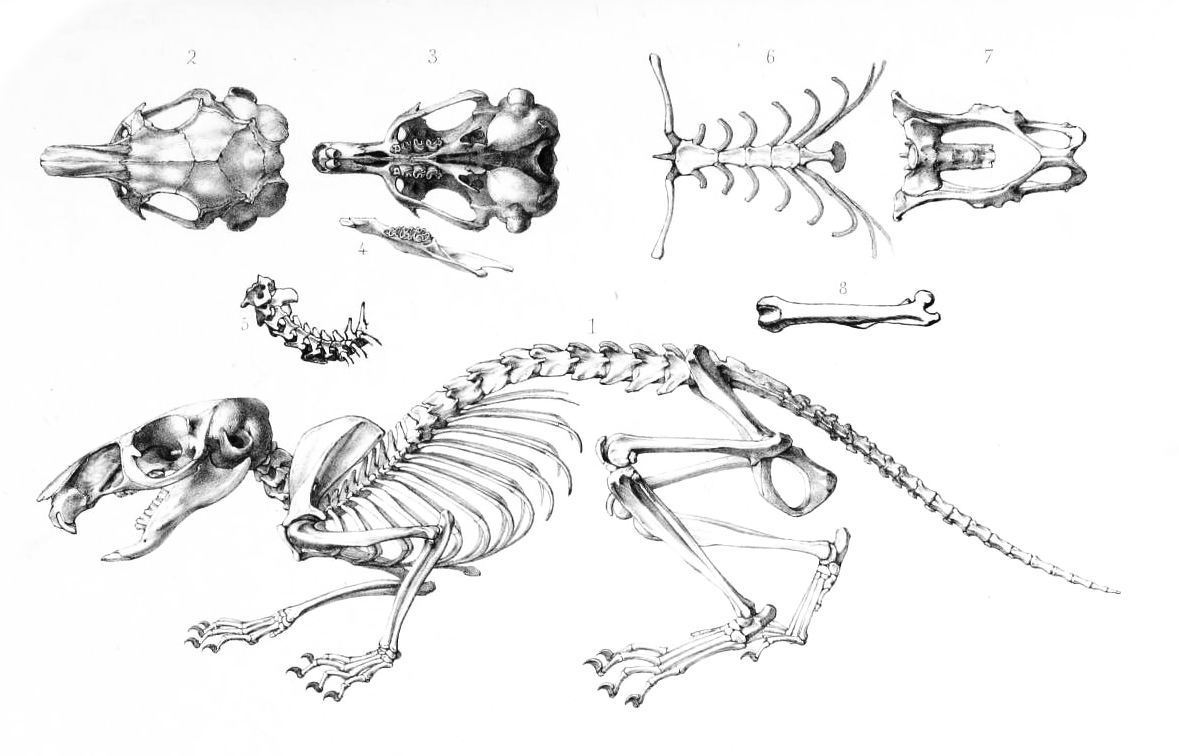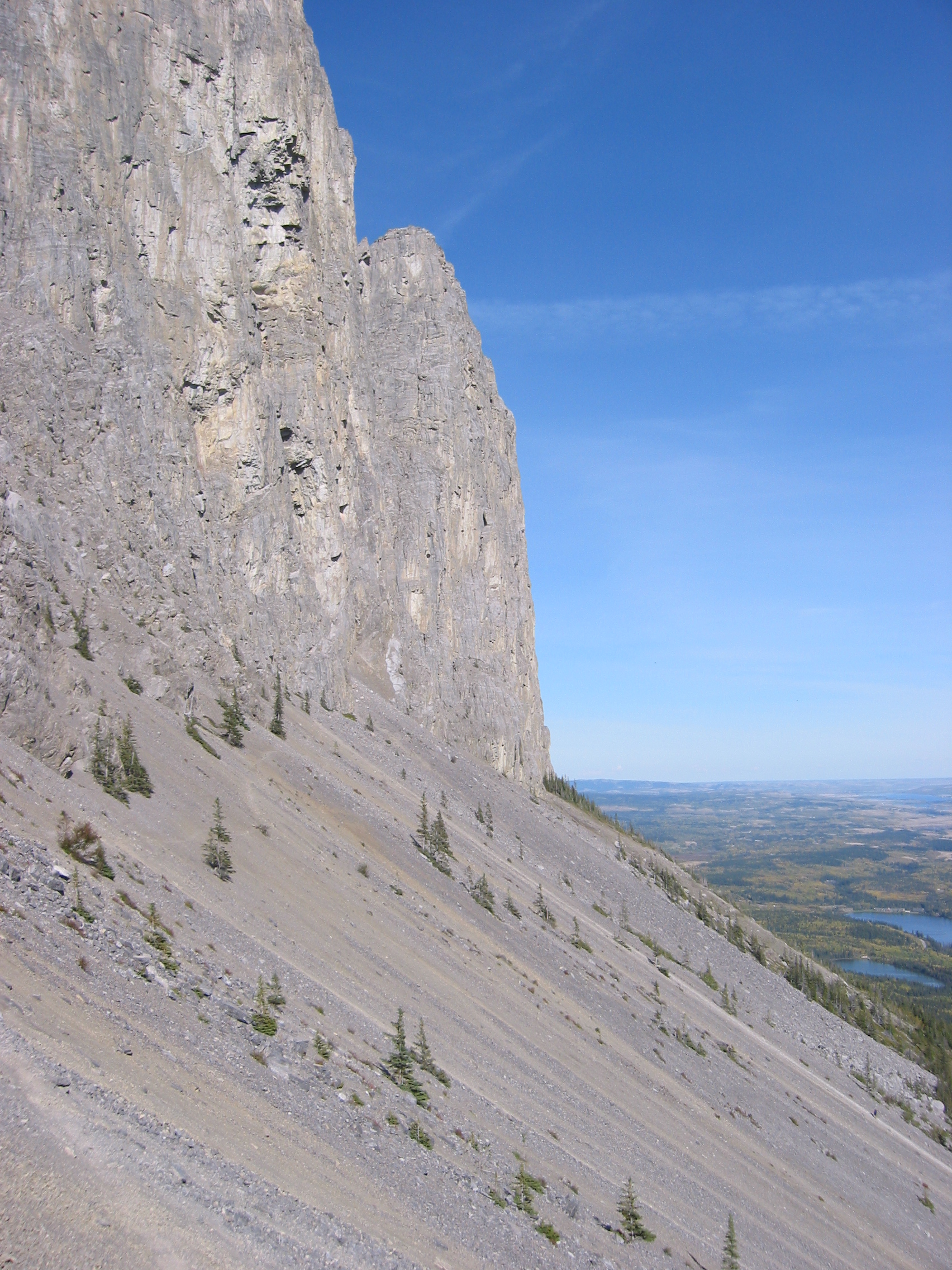|
Gundis
Gundis or comb rats are a group of small, stocky, African rodents in the family Ctenodactylidae. They live in rocky deserts across Northern Africa. The family comprises four living genera and five species ( Speke's gundi, Felou gundi, Val's or desert gundi, common or North African gundi and Mzab gundi), as well as numerous extinct genera and species. They are in the superfamily Ctenodactyloidea. Local people in northern Africa have always known about gundis, however they first came to the notice of western naturalists in Tripoli in 1774, and were given the name ''gundi mice''. While they are not regarded as pests, some people hunt gundis for food. All living gundi species are members of the Ctenodactylinae sub-family. The Ctenodactylidae family also includes three extinct sub-families, Tataromyinae, Karakoromyinae and Dystylomyinae. The scientific name comes from Ancient Greek (), "comb", and (), "finger". Description Gundis are from 17 to 18 cm in body length, with ... [...More Info...] [...Related Items...] OR: [Wikipedia] [Google] [Baidu] |
Common Gundi
The common gundi (''Ctenodactylus gundi'') is a species of rodent in the family Ctenodactylidae. It is found in Algeria, Libya, Morocco, and Tunisia. The parasitic organism ''Toxoplasma gondii'' was first described in 1908 in Tunis by Charles Nicolle and Louis Manceaux within the tissues of the gundi. Description The common gundi grows to a length of between , having a stumpy tail of . A gundi weighs about . It resembles a guinea pig in appearance, having big eyes, flat ears and short limbs. Each foot has four digits and sharp, dark claws; the two hind feet have comblike bristles between the claws. Gundi's teeth are rootless. Distribution This gundi is found in northern Africa on the south side of the Atlas Mountains at altitudes up to about . Its range extends from western Libya through Tunisia and Algeria to eastern Morocco. Ecology and biology Gundis are diurnal and herbivorous. It lives in rocky, arid places, making its home in crevices and under boulders. These homes ar ... [...More Info...] [...Related Items...] OR: [Wikipedia] [Google] [Baidu] |
Speke's Pectinator
Speke's pectinator (''Pectinator spekei'') or Speke's gundi, is a species of rodent in the family Ctenodactylidae. It is monotypic within the genus ''Pectinator''.Dieterlen, F. 2005. Family Ctenodactylidae pp. 1536-1537 ''in'' D. E. Wilson and M. A. Reeder, eds. ''Mammal Species of the World'', 3rd edition, p. 1536. It is found in Djibouti, Eritrea, Ethiopia, and Somalia. Its natural habitats are subtropical or tropical dry shrubland, subtropical or tropical dry lowland grassland A grassland is an area where the vegetation is dominance (ecology), dominated by grasses (Poaceae). However, sedge (Cyperaceae) and rush (Juncaceae) can also be found along with variable proportions of legumes such as clover, and other Herbaceo ..., and rocky areas. References * Coetzee, N. & Grubb, P. 2004''Pectinator spekei'' [...More Info...] [...Related Items...] OR: [Wikipedia] [Google] [Baidu] |
Felou Gundi
The felou gundi (''Felovia vae'') is a species of rodent in the family Ctenodactylidae. It is monotypic within the genus ''Felovia''.Dieterlen, F. 2005. Family Ctenodactylidae pp. 1536-1537 ''in'' D. E. Wilson and M. A. Reeder, eds. ''Mammal Species of the World'', 3rd edition, p. 1536. Distribution It is found in Mali, Mauritania, and Senegal. Habitat Its natural habitats are dry savanna, subtropical or tropical dry shrubland, subtropical or tropical dry lowland grassland A grassland is an area where the vegetation is dominance (ecology), dominated by grasses (Poaceae). However, sedge (Cyperaceae) and rush (Juncaceae) can also be found along with variable proportions of legumes such as clover, and other Herbaceo ..., and rocky areas. References felou gundi Mammals of West Africa felou gundi Taxonomy articles created by Polbot Taxa named by Fernand Lataste {{rodent-stub ... [...More Info...] [...Related Items...] OR: [Wikipedia] [Google] [Baidu] |
Mzab Gundi
The Mzab gundi (''Massoutiera mzabi'') is a species of rodent in the family Ctenodactylidae. It is monotypic within the genus ''Massoutiera''. It is found in Algeria, Chad, Mali, Niger, and possibly Libya Libya, officially the State of Libya, is a country in the Maghreb region of North Africa. It borders the Mediterranean Sea to the north, Egypt to Egypt–Libya border, the east, Sudan to Libya–Sudan border, the southeast, Chad to Chad–L .... The Mzab gundi can live in a variety of climates, including arid deserts with sparse vegetation and annual rainfall less than 20 mm. However, it lacks many of the adaptations other rodents use to cope with such extreme environments, instead relying on behavior to survive in those regions. References Mzab gundi Rodents of North Africa Fauna of the Sahara Mzab gundi Taxonomy articles created by Polbot Taxa named by Fernand Lataste {{rodent-stub ... [...More Info...] [...Related Items...] OR: [Wikipedia] [Google] [Baidu] |
Felovia
The felou gundi (''Felovia vae'') is a species of rodent in the family Ctenodactylidae. It is monotypic within the genus ''Felovia''.Dieterlen, F. 2005. Family Ctenodactylidae pp. 1536-1537 ''in'' D. E. Wilson and M. A. Reeder, eds. ''Mammal Species of the World'', 3rd edition, p. 1536. Distribution It is found in Mali, Mauritania, and Senegal. Habitat Its natural habitats are dry savanna, subtropical or tropical dry shrubland, subtropical or tropical dry lowland grassland, and rocky areas. References felou gundi Mammals of West Africa felou gundi The felou gundi (''Felovia vae'') is a species of rodent in the family Ctenodactylidae. It is monotypic within the genus ''Felovia''.Dieterlen, F. 2005. Family Ctenodactylidae pp. 1536-1537 ''in'' D. E. Wilson and M. A. Reeder, eds. ''Mamm ... Taxonomy articles created by Polbot Taxa named by Fernand Lataste {{rodent-stub ... [...More Info...] [...Related Items...] OR: [Wikipedia] [Google] [Baidu] |
Massoutiera
The Mzab gundi (''Massoutiera mzabi'') is a species of rodent in the family Ctenodactylidae. It is monotypic within the genus ''Massoutiera''. It is found in Algeria, Chad, Mali, Niger, and possibly Libya. The Mzab gundi can live in a variety of climates, including arid deserts with sparse vegetation and annual rainfall less than 20 mm. However, it lacks many of the adaptations other rodents use to cope with such extreme environments, instead relying on behavior to survive in those regions. References Mzab gundi Rodents of North Africa Fauna of the Sahara Mzab gundi The Mzab gundi (''Massoutiera mzabi'') is a species of rodent in the family Ctenodactylidae. It is monotypic within the genus ''Massoutiera''. It is found in Algeria, Chad, Mali, Niger, and possibly Libya Libya, officially the State of ... Taxonomy articles created by Polbot Taxa named by Fernand Lataste {{rodent-stub ... [...More Info...] [...Related Items...] OR: [Wikipedia] [Google] [Baidu] |
Ancient Greek
Ancient Greek (, ; ) includes the forms of the Greek language used in ancient Greece and the classical antiquity, ancient world from around 1500 BC to 300 BC. It is often roughly divided into the following periods: Mycenaean Greek (), Greek Dark Ages, Dark Ages (), the Archaic Greece, Archaic or Homeric Greek, Homeric period (), and the Classical Greece, Classical period (). Ancient Greek was the language of Homer and of fifth-century Athens, fifth-century Athenian historians, playwrights, and Ancient Greek philosophy, philosophers. It has contributed many words to English vocabulary and has been a standard subject of study in educational institutions of the Western world since the Renaissance. This article primarily contains information about the Homeric Greek, Epic and Classical periods of the language, which are the best-attested periods and considered most typical of Ancient Greek. From the Hellenistic period (), Ancient Greek was followed by Koine Greek, which is regar ... [...More Info...] [...Related Items...] OR: [Wikipedia] [Google] [Baidu] |
Scree
Scree is a collection of broken rock fragments at the base of a cliff or other steep rocky mass that has accumulated through periodic rockfall. Landforms associated with these materials are often called talus deposits. The term ''scree'' is applied both to an unstable steep mountain slope composed of rock fragments and other debris, and to the mixture of rock fragments and debris itself. It is loosely synonymous with talus, material that accumulates at the base of a projecting mass of rock, or talus slope, a landform composed of talus. The term ''scree'' is sometimes used more broadly for any sheet of loose rock fragments mantling a slope, while ''talus'' is used more narrowly for material that accumulates at the base of a cliff or other rocky slope from which it has obviously eroded. Scree is formed by rockfall, which distinguishes it from colluvium. Colluvium is rock fragments or soil deposited by rainwash, sheetwash, or slow downhill creep, usually at the base of gentle ... [...More Info...] [...Related Items...] OR: [Wikipedia] [Google] [Baidu] |
Weaning
Weaning is the process of gradually introducing an infant human or other mammal to what will be its adult diet while withdrawing the supply of its mother's milk. In the United Kingdom, UK, weaning primarily refers to the introduction of solid foods at 6 months; in the United States, US, it primarily refers to stopping breastfeeding. The process takes place only in mammals, as only mammals produce milk. The infant is considered to be fully weaned once it is no longer breastfeeding, fed by any breast milk (or bottled Infant formula, substitute). Humans In some cultures, weaning progresses with the introduction of feeding the child food that has been prechewed by the parent along with continued breastfeeding, a practice known as premastication. The practice was important throughout human history in that it naturally gave a child a greatly improved protein source in addition to preventing iron deficiency. However, premasticated food from caregivers of lower socioeconomic status i ... [...More Info...] [...Related Items...] OR: [Wikipedia] [Google] [Baidu] |


